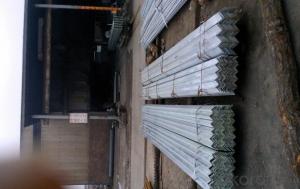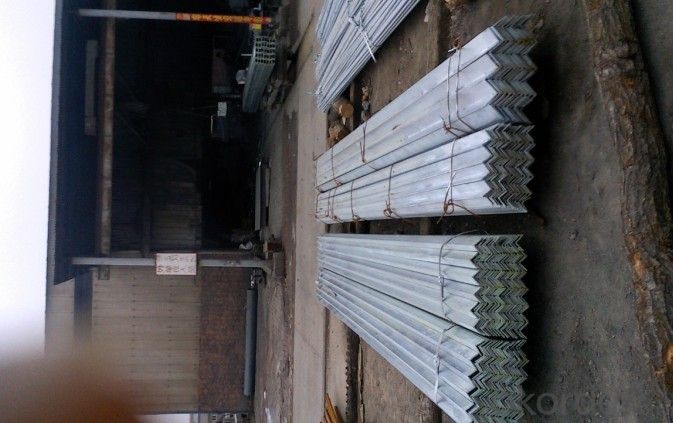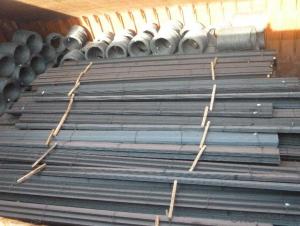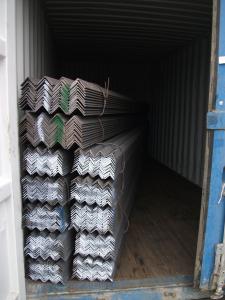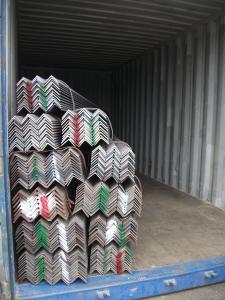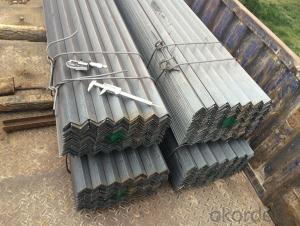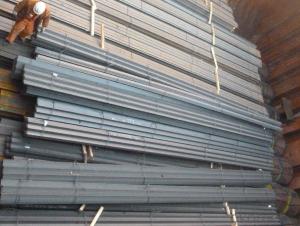HR Equal Angle Steel Bars for Warehouses
- Loading Port:
- Tianjin
- Payment Terms:
- TT OR LC
- Min Order Qty:
- 25 m.t.
- Supply Capability:
- 200000 m.t./month
OKorder Service Pledge
OKorder Financial Service
You Might Also Like
Product Description:
OKorder is offering HR Equal Angle Steel Bars for Warehouses at great prices with worldwide shipping. Our supplier is a world-class manufacturer of steel, with our products utilized the world over. OKorder annually supplies products to European, North American and Asian markets. We provide quotations within 24 hours of receiving an inquiry and guarantee competitive prices.
Product Applications:
HR Equal Angle Steel Bars for Warehouses are ideal for structural applications and are widely used in the construction of buildings and bridges, and the manufacturing, petrochemical, and transportation industries.
1. Supporting members, most commonly in the house raising industry to strengthen timber bears under houses. Transmission line towers, etc
2. Prefabricated structure
3. Medium scale bridges
4. It is widely used in various building structures and engineering structures such as roof beams, bridges, transmission towers, hoisting machinery and transport machinery, ships, industrial furnaces, reaction tower, container frame and warehouse etc.
Product Advantages:
HR Equal Angle Steel Bars for Warehouses are durable, strong, and resist corrosion.
Main Product Features:
· Premium quality
· Prompt delivery & seaworthy packing (30 days after receiving deposit)
· Corrosion resistance
· Can be recycled and reused
· Mill test certification
· Professional Service
· Competitive pricing
Product Specifications:
.Standards:GB,ASTM,BS,AISI,DIN,JIS
2.Invoicing on theoretical weight or actual weight as customer request
3.Material: JIS G3192,SS400;SS540.
4.Sizes:
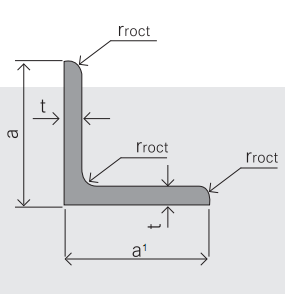
EQUAL ANGLES SIZES | |||
a(mm) | a1(mm) | thickness(mm) | length |
25 | 25 | 2.5---3.0 | 6M/12M |
30 | 30 | 2.5---4.0 | 6M/12M |
38 | 38 | 2.5 | 6M/12M |
38 | 38 | 3.0---5.0 | 6M/12M |
40 | 40 | 3.0---6.0 | 6M/12M |
50 | 50 | 3 | 6M/12M |
50 | 50 | 3.7---6.0 | 6M/9M/12M |
60 | 60 | 5.0---6.0 | 6M/9M/12M |
63 | 63 | 6.0---8.0 | 6M/9M/12M |
65 | 65 | 5.0---8.0 | 6M/9M/12M |
70 | 70 | 6.0---7.0 | 6M/9M/12M |
75 | 75 | 5.0---10.0 | 6M/9M/12M |
80 | 80 | 6.0---10.0 | 6M/9M/12M |
90 | 90 | 6.0---10.0 | 6M/9M/12M |
100 | 100 | 6.0---12.0 | 6M/9M/12M |
120 | 120 | 8.0-12.0 | 6M/9M/12M |
125 | 125 | 8.0---12.0 | 6M/9M/12M |
130 | 130 | 9.0-12.0 | 6M/9M/12M |
140 | 140 | 10.0-16.0 | 6M/9M/12M |
150 | 150 | 10---15 | 6M/9M/12M |
160 | 160 | 10---16 | 6M/9M/12M |
180 | 180 | 12---18 | 6M/9M/12M |
200 | 200 | 14---20 | 6M/9M/12M |
5. Material Specifications:
Grade | Yield Strength,N/mm² | Extension Strength N/mm² | |||
Thickness of Steel,mm | |||||
≦16 | >16-≦40 | >40-≦100 | >100 | ||
SS330 | ≧205 | ≧195 | ≧175 | ≧165 | 330-430 |
SS400 | ≧245 | ≧235 | ≧215 | ≧205 | 400-510 |
SS490 | ≧285 | ≧275 | ≧255 | ≧245 | 490-610 |
SS540 | ≧400 | ≧390 | - | - | ≧540 |
FAQ:
Q1: Why buy HR Equal Angle Steel Bars for Warehouses from OKorder.com?
A1: All products offered byOKorder.com are carefully selected from China's most reliable manufacturing enterprises. Through its ISO certifications, OKorder.com adheres to the highest standards and a commitment to supply chain safety and customer satisfaction.
Q2: What makes HR Equal Angle Steel Bars for Warehouses?
A2: Steel billets of high quality produced by big factories
Q3: Can HR Equal Angle Steel Bars for Warehouses rust?
A3: Stainless does not "rust" as you think of regular steel rusting with a red oxide on the surface that flakes off. If you see red rust it is probably due to some iron particles that have contaminated the surface of the stainless steel and it is these iron particles that are rusting. Look at the source of the rusting and see if you can remove it from the surface.
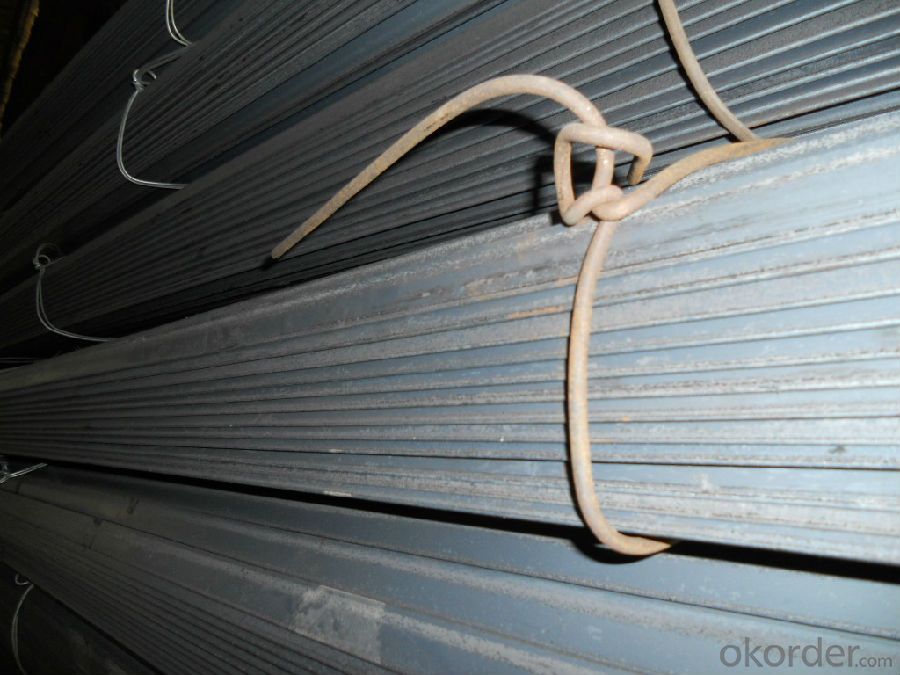
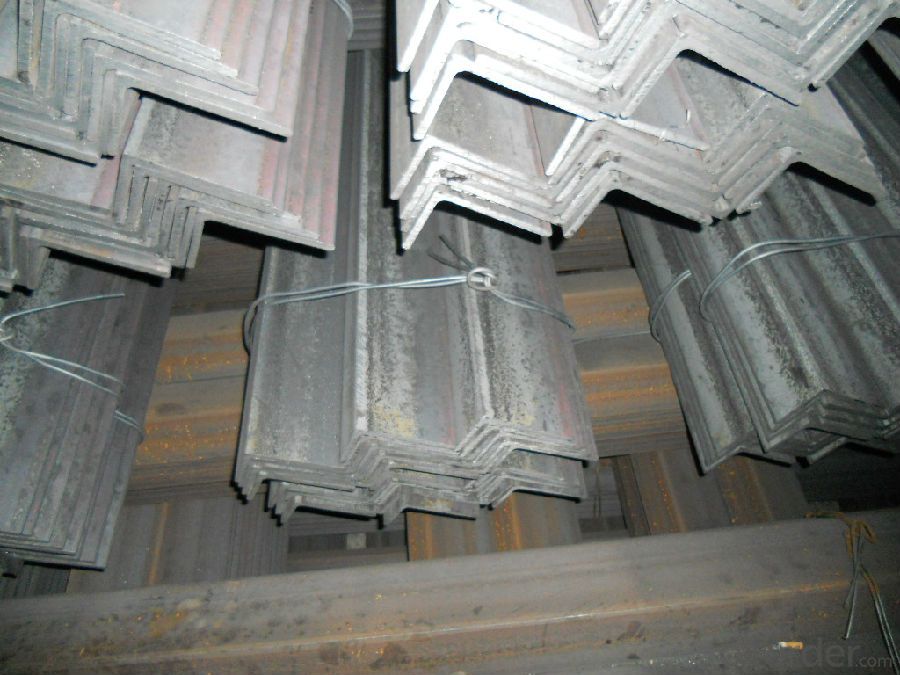
- Q: Can steel angles be used as supports for signage or lighting fixtures?
- Yes, steel angles can be used as supports for signage or lighting fixtures. Steel angles are commonly used in construction and can provide strong and sturdy support for various applications, including signage and lighting fixtures.
- Q: What are the different grades of steel used for angles?
- The different grades of steel commonly used for angles include A36, A572, and A588.
- Q: What are the different methods of surface painting for steel angles?
- There exists a variety of techniques for surface painting steel angles, each offering distinct advantages and considerations. 1. Brushing: The most commonly employed method for surface painting steel angles involves the manual application of paint using a brush. Brushing provides excellent control and precision, making it well-suited for smaller projects or touch-ups. However, it may not be as efficient for larger-scale applications. 2. Spraying: When a large area needs to be painted quickly, spraying is a popular technique for painting steel angles. It involves the even distribution of paint onto the surface using a paint spray gun or aerosol canister. Spraying results in a smooth and uniform finish, but proper safety precautions, such as wearing a mask and ensuring adequate ventilation, are necessary. 3. Dipping: In this method, steel angles are immersed in a tank or container filled with paint. Dipping ensures complete coverage and is often utilized in high-volume production processes. However, it may not be suitable for angles with intricate designs or complex shapes, as excess paint may drip or accumulate unevenly. 4. Electrostatic painting: Electrostatic painting involves charging the paint particles and applying them to a grounded steel angle. This creates an electromagnetic attraction, resulting in an even and efficient coverage. This technique is commonly employed in industrial settings and aids in reducing paint waste and overspray. 5. Powder coating: Powder coating is a dry finishing process that entails the application of a fine powder onto the surface of a steel angle. The powder is then heated and fused onto the metal, creating a durable and visually appealing finish. Powder coating offers excellent corrosion resistance and can be done in a variety of colors and textures. However, specialized equipment is required, and it may not be suitable for small-scale or on-site applications. When selecting a surface painting method for steel angles, careful consideration must be given to factors such as project size and complexity, desired finish quality, environmental conditions, and available resources. Seeking guidance from a professional painter or coating specialist can help determine the most appropriate method for a specific application.
- Q: What are the different surface treatments available for galvanized steel angles?
- To enhance the appearance, durability, and resistance to corrosion of galvanized steel angles, there are various surface treatments available. Some commonly used treatments include: 1. Powder coating: This method involves applying a dry powder onto the surface of the galvanized steel angle, followed by heating to create a long-lasting and visually appealing finish. Powder coating can be customized to achieve different colors and textures, resulting in a high-quality surface treatment. 2. Painting: Galvanized steel angles can also be painted with different coatings, such as epoxy, polyurethane, or enamel paint. Painting adds an extra layer of protection against corrosion and can be tailored to meet specific aesthetic requirements. 3. Hot-dip galvanizing: This treatment is the initial process for galvanized steel angles. It involves immersing the angles in a bath of molten zinc, which forms a protective layer on the surface. Hot-dip galvanizing offers excellent corrosion resistance and is particularly suitable for outdoor applications. 4. Zinc electroplating: Similar to hot-dip galvanizing, zinc electroplating applies a thin layer of zinc to the steel angle's surface through an electrochemical process. This treatment offers good corrosion protection and can be combined with other surface treatments to enhance durability. 5. Anodizing: Anodizing is commonly used for aluminum surfaces but can also be applied to galvanized steel angles. This process creates a controlled oxide layer on the surface, improving corrosion resistance and providing a decorative finish. 6. Passivation: Passivation is a chemical treatment that eliminates iron and other impurities from the surface of galvanized steel angles. It enhances the steel's corrosion resistance by creating a passive oxide layer. When selecting a surface treatment for galvanized steel angles, it is crucial to consider specific application requirements, budget constraints, and desired aesthetic appearance. Seeking advice from professionals or suppliers can help determine the most suitable treatment for your needs.
- Q: Can steel angles be used in curtain wall construction?
- Yes, steel angles can be used in curtain wall construction. Steel angles are commonly used as framing members in curtain wall systems to provide structural support and rigidity. They are typically used as mullions or transoms, which are the vertical and horizontal members that hold the glass panels in place. Steel angles are preferred due to their strength, durability, and ability to withstand the loads and stresses of the curtain wall system. Additionally, steel angles can be easily fabricated and installed, making them a popular choice in curtain wall construction.
- Q: What are the different types of steel angles used in shipbuilding?
- There are several types of steel angles commonly used in shipbuilding, including equal angles, unequal angles, bulb flats, and hollow sections. These angles are used to provide structural support, reinforcement, and stability to various components of a ship's hull and superstructure.
- Q: Are steel angles suitable for reinforcing concrete structures?
- Yes, steel angles are suitable for reinforcing concrete structures. Steel angles are commonly used in construction as they provide strength, stability, and support to concrete structures. By adding steel angles to reinforce concrete, the overall structural integrity of the building or structure is enhanced, ensuring its durability and resistance to various loads and forces.
- Q: Are there any limitations on the angle of inclination for steel angles?
- There exist restrictions on the angle of inclination for steel angles. The angle of inclination pertains to how the steel angle is positioned or installed in a structure. The limitations regarding this angle are influenced by several factors, including the type and thickness of the steel angle, the load it is anticipated to bear, and the precise design and engineering requirements of the structure. Typically, steel angles can be installed at a variety of angles of inclination, ranging from vertical (90 degrees) to horizontal (0 degrees). However, it is crucial to consider practical restrictions. Steel angles are typically engineered to bear loads in a specific direction, and straying too far from the intended angle of inclination can compromise their structural integrity and load-bearing capacity. Furthermore, the installation angle of steel angles may be restricted by the connection methods employed. Welding, bolting, or other fastening techniques may have specific prerequisites for the angle of inclination to ensure proper connection strength and stability. To ascertain the specific limitations on the angle of inclination for steel angles in a particular application, it is important to consult relevant building codes, standards, and engineering guidelines. Professional structural engineers possess the necessary expertise and guidance to ensure that the steel angles are installed within safe and appropriate limits.
- Q: Can steel angles be used for load-bearing walls?
- Load-bearing walls can indeed utilize steel angles. In construction, steel angles serve as a structural component, offering support and stability. They effectively reinforce load-bearing walls, enhancing their strength and rigidity. By evenly distributing the weight of a load, steel angles are well-suited for load-bearing purposes. Nevertheless, it is crucial to ensure that the design and installation of the steel angles align with the wall's specific load criteria. Seeking guidance from a structural engineer or construction expert is advisable to guarantee the correct application of steel angles for load-bearing walls.
- Q: Can steel angles be used in industrial or heavy-duty applications?
- Yes, steel angles can be widely used in industrial or heavy-duty applications due to their high strength, durability, and versatility. They are commonly utilized in construction, infrastructure, manufacturing, and fabrication industries for various purposes such as supporting structures, framing, bracing, and reinforcement. Their ability to withstand heavy loads and provide stability makes them suitable for demanding environments where strength and resilience are crucial.
Send your message to us
HR Equal Angle Steel Bars for Warehouses
- Loading Port:
- Tianjin
- Payment Terms:
- TT OR LC
- Min Order Qty:
- 25 m.t.
- Supply Capability:
- 200000 m.t./month
OKorder Service Pledge
OKorder Financial Service
Similar products
Hot products
Hot Searches
Related keywords
